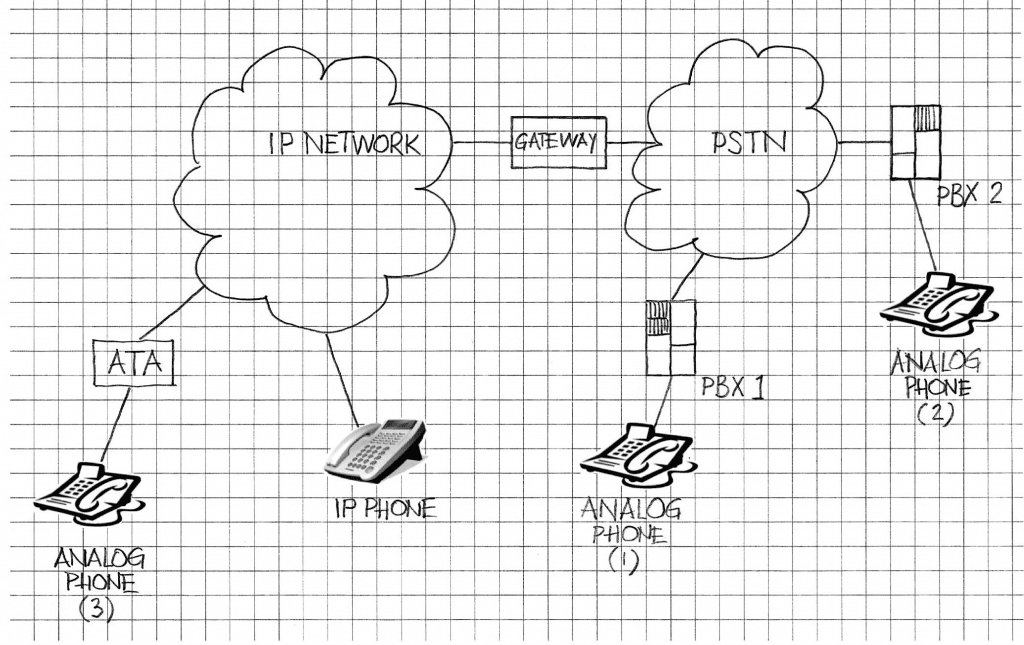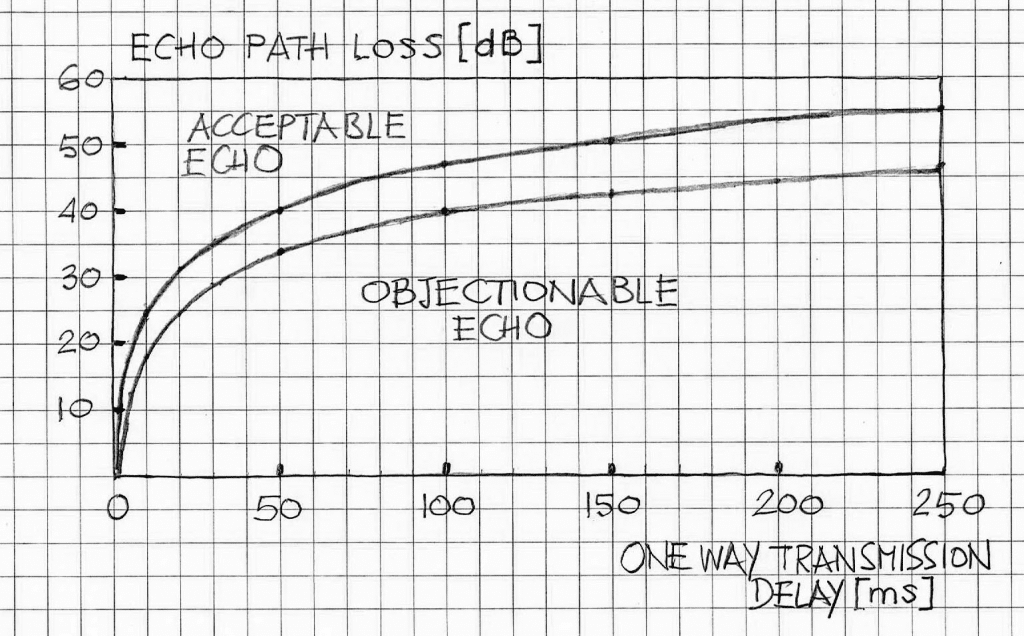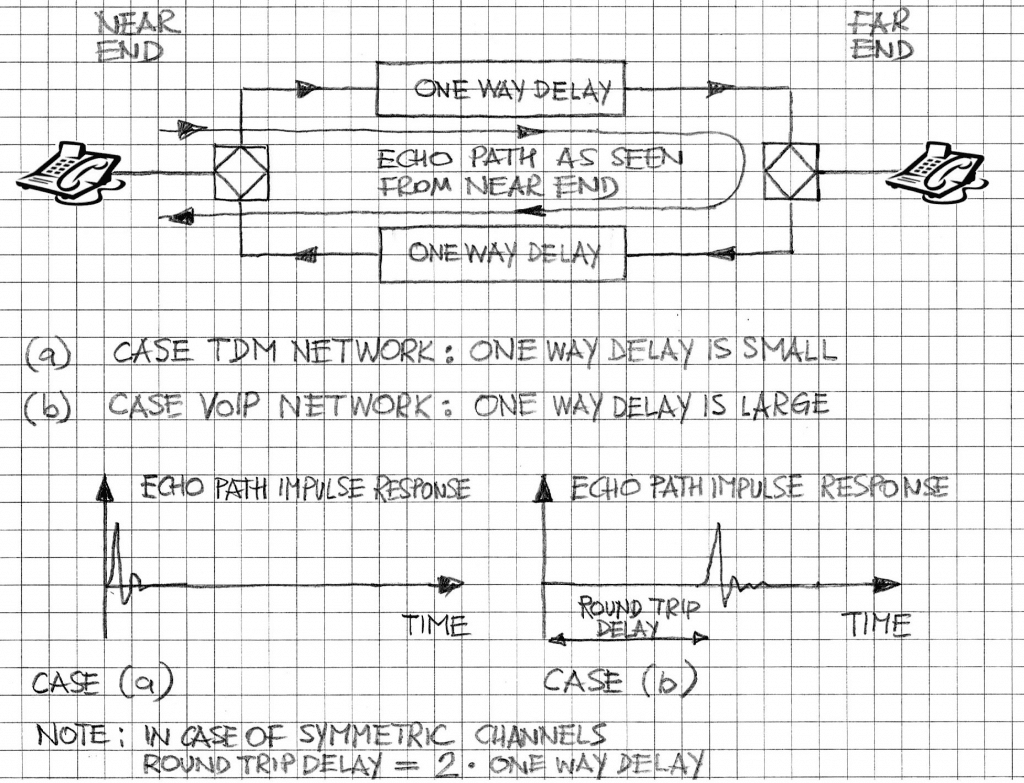In this note we outline the main reasons for the need to deploy echo cancellers in VoIP networks (or hybrid networks where the IP network provides connectivity) and we contrast it with TDM networks (such as PSTN) where the need for echo cancellers is primarily limited to long-haul networks. While in both situations the energy of the reflected signals may be very similar, (note that the actual reflected energy depends on the ERL value at the given end of the network connection, which, in turn depends on the degree of balancing of the respective hybrid circuit as well as on whether the acoustic echo component is large or not), the round trip delays are, generally speaking, quite different, primarily due to packet delays in VoIP networks and other delays (for example jitter buffer delays).

In the case of TDM networks, the primary delay is “electrical” delay, which becomes significant only for long-haul network connections. In the case of local and regional calls the round trip delays are relatively small. The term “relative” specifically refers to the human perception of reflected signals. ITU-T G.131, Ref. [1] states that for typical lines (meaning lines with typical ERL values) the round-trip delay of 20 ms is a threshold value, below which, the signal reflection is not perceived as an echo. Of course, if reflected energy is unusually large, then an audibly adverse effect of reflected signal will occur even for smaller delays. The same referenced document also says that “… in cases where the reflected voice signal has a delay close to zero it is referred to as sidetone, … ‘’. If in a particular case the unusually high energy of the sidetone is audibly detrimental, then the control of that can be achieved using much simpler means than through echo cancellation. Figure 2 summarizes, in approximate fashion, regions of acceptable echo and objectionable echo versus one-way transmission delay, for different ERL values. (A similar figure is available for TERL values, Ref.[1])

Let’s now examine round trip delay between end subscribers connected (a) by connection within PSTN and (b) by connection over VoIP network and PSTN. These two scenarios are depicted in Figure 1 which shows end-to-end connections using different communication paths. The echo path delay as seen from Point # 1 (phone # 1) towards the far end (phone # 2) is only affected by ‘electrical’ delay. The echo path delay as seen from Point # 3 (phone # 2) towards Point # 1 (phone # 1) is much longer due to packet delays in the IP Network.
In the case (b) (i.e., voice connection between phone # 1 and phone # 2, as per Figure 1) over a hypothetical intra-state telephone connection (the equivalent one-way distance of, say, 200 miles) is affected by 2ms round trip delay. Typical dispersion time of the echo path of the hybrid circuit alone is 3 ms. Thus, the total echo path delay for that call is approximately 5 ms (cf. Figures 2 and 3). Therefore, this connection (and similar ones) does not have to go through an echo canceller.

In the case (b) (i.e., a local voice connection between phone # 1 and phone # 3, as per Figure 1), the “electrical” delay is negligible. However, packet delays, typically being around 80ms (one way) and, in extreme cases, they may be as long as 200 ms, the typical round trip delay exceeds 160 ms thus even for well-balanced hybrid circuits (i.e,. when ERL values are greater than 24 dB) the echo will be heard, if no echo canceller is included in the voice channel. Therefore, every voice channel over the IP network has to include an echo canceller.
Note that the echo cancellers deployed in the VoIP networks do not have to estimate the entire round trip delay (cf. Figure 3 (b)). Typically echo cancellers are deployed closely to the network access points; therefore, they require echo path coverage such that that it will cover the entire dispersion of the “local” echo path. In the case of a line echo canceller, the echo path coverage for typical connections does not have to be greater than 16 ms, although a “safer” solution is if the echo path coverage exceeds 24 ms (cf. Ref. [2]). However, if the voice terminal is also used in the hands free mode, then acoustic echo becomes a significant part of the combined echo path. Then the requirements regarding the echo path coverage are more stringent.
VOCAL’s VoIP Software modules are part of our VoIP Reference Design and provide secure, real-time unified communications for voice, video, radio and data over the Internet or any other IP network. Echo cancellation solutions are typically included in the software modules. Contact us to discuss your VoIP application requirements with our engineering staff.
More Information
References
- ITU-T G.131, Talker Echo and Its Control (11/2003)
- ITU-T G.168-2012, Network Echo Canceller (02/2012)
- Acoustic Echo Canceller